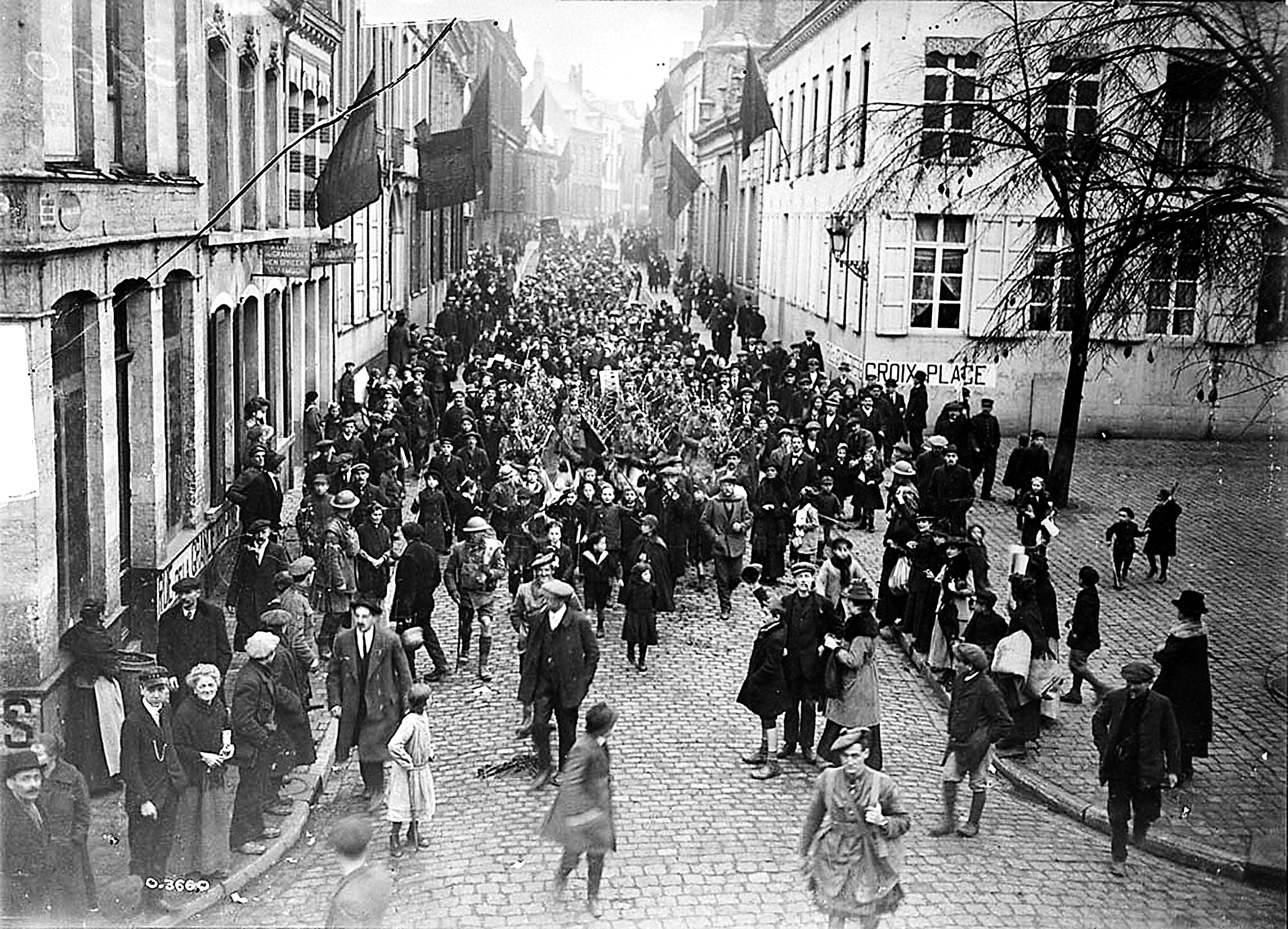Tom Slater & Tom St. Amand
In the early hours of Monday, Nov. 11, 1918, Canadian soldiers learned that peace would officially begin that day at 11 a.m.
After four long years of slaughter and starvation, the First World War was about to end.
And it couldn’t come soon enough.
On Nov. 11, fifteen Canadians were wounded in skirmishes and one, 25-year-old Private George Price, was killed by a sniper’s bullet near Mons, Belgium just minutes before 11 a.m. The unfortunate Nova Scotian was the last Commonwealth soldier killed before the Armistice.
After the clock struck eleven, Canadian liberators throughout occupied Europe were welcomed with hugs and kisses, and wine and flowers.
In Sarnia, residents awoke that morning to a newspaper headline that read, “Humanity Saved,” and a city erupting in unrestrained joy. Strangers became friends in spontaneous street celebrations.
Mayor Crawford immediately declared the day a public holiday and issued a proclamation that declared, in part, that God had helped the Allies defeat “the powers of ruthlessness and despotism.”
Industries shut down, schools closed and businesses and stores locked their doors for the day. The city had never seen anything like it.
Thousands marched through the streets in unrehearsed processions, pounding on drums and old cans and any object that could make a suitably loud noise. Hundreds of carriages and vehicles of all kinds paraded past the celebrants as men, women, and children, young and old, cheered and sang joyously together.
Among the participants were veterans who had fought in Europe, some still wounded and on crutches. Full congregations attended special masses and services churches offered.
Incredibly, the spontaneous outburst that Monday was only a prelude to the following night, when Sarnia hosted an even more massive celebration of peace.
On Nov. 12, thousands of citizens joined in the festivities, including hundreds from Corunna, Courtright, Forest, Petrolia and Walpole Island. Starting at what is now called Veterans Park, throngs of cheering participants headed north through the downtown, forming a noisy torchlight parade in the darkness.
A cacophony of tin cans, bells, whistles, and horns competed with the musical effort of seven marching bands, including those from Forest and Petrolia.
The diverse participants included members of the local and boisterous Chinese community, who brought in a Chinese band from Toronto; visitors from Port Huron; members of First Nation communities in full war dress, feathers and paint; hundreds of Imperial Oil employees carrying torches beside the company float and every truck it owned; and a number of Spanish War Veterans and members of the Great War Veterans’ Association.
An estimated 25,000 celebrants —twice Sarnia population — eventually gathered at the “old golf grounds,” now the site of Norm Perry Park.
With confetti and fireworks rocketing skyward, a pile of boxes twenty-five feet high was ignited to create an enormous bonfire. After the Kaiser was burned in effigy, the crowd began dispersing at 11 p.m., but many continued the merrymaking on Front Street until the early morning.
The death of Sarnia’s young heroes was never far away and soon citizens would officially mourn the more than 110 soldiers who never returned, including Neil Hanna and Frederick Doxstater, who both died a few days after Nov. 11.
And Sarnians would eventually greet and cheer its returning veterans, and see the damage the war had wrought on body and mind.
But that would come later.
One hundred years ago, on Nov. 11 and 12, residents let loose to enjoy what one observer called “a once in a lifetime civic celebration.”


